HUMAN ANATOMY PHYSIOLOGY Second Edition Chapter 04 Histology


















































































































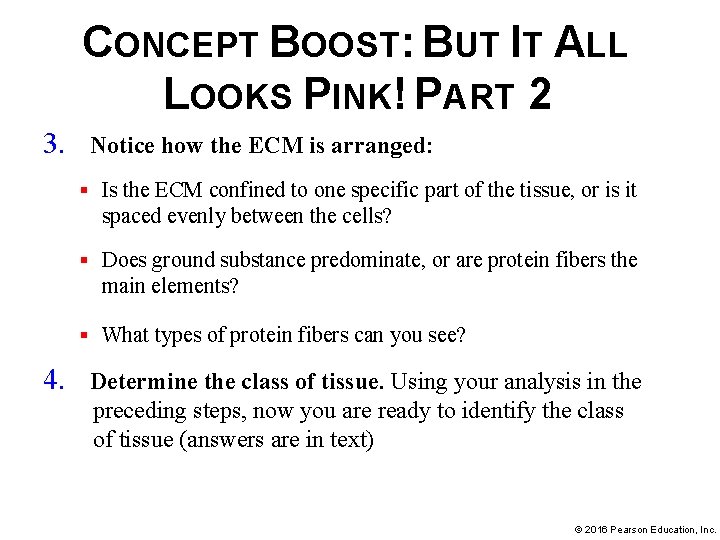
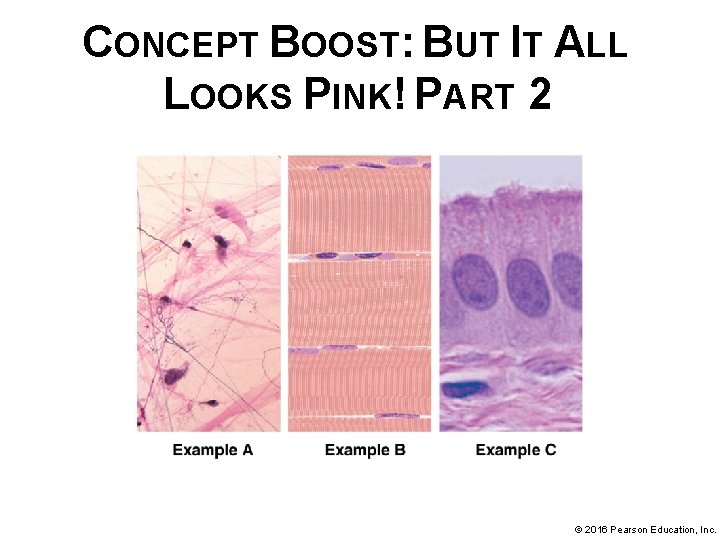
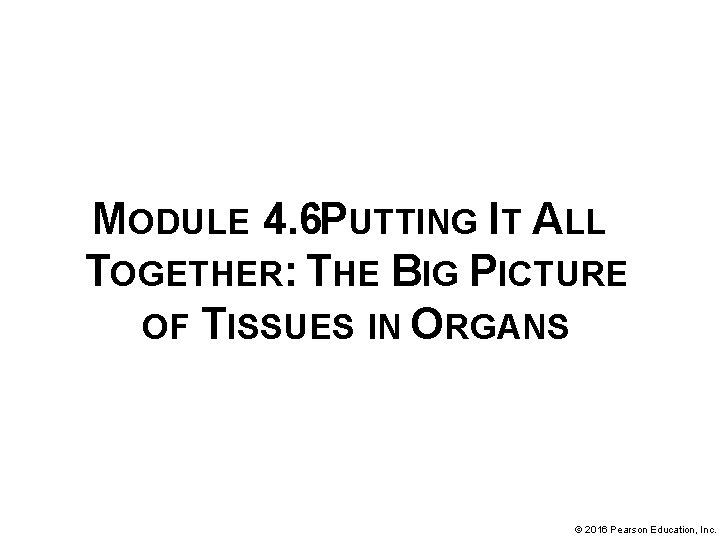
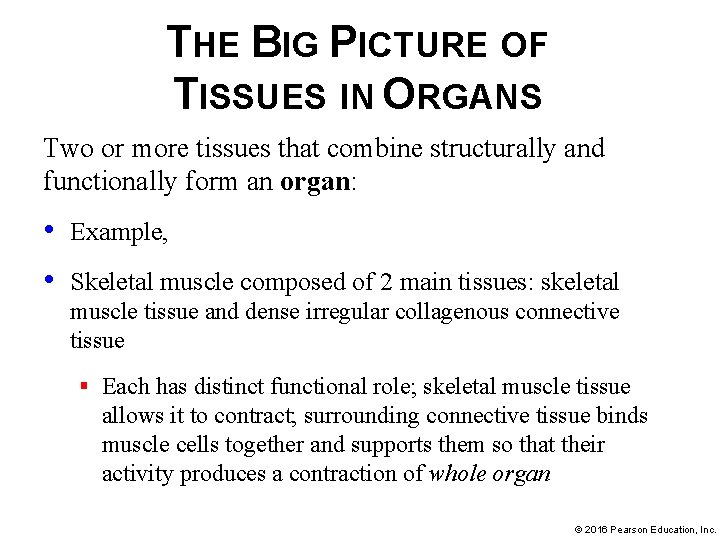
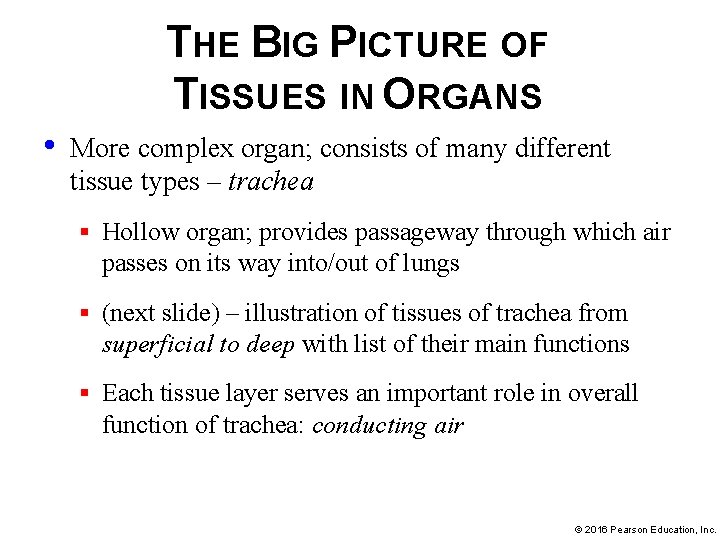

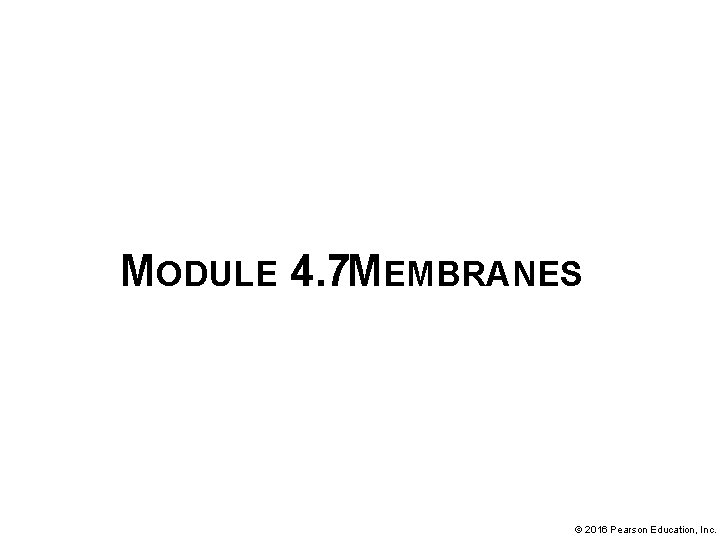
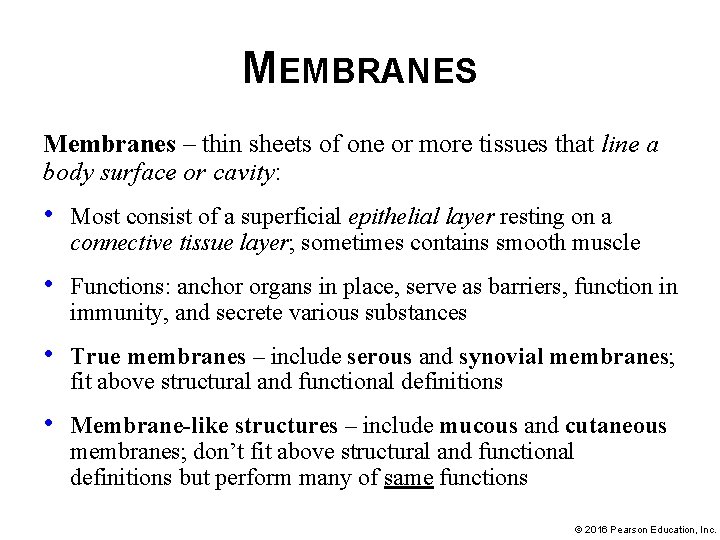
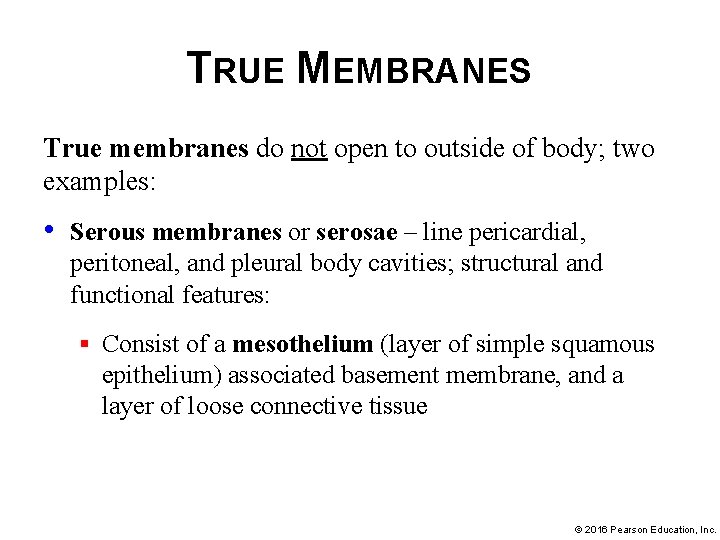
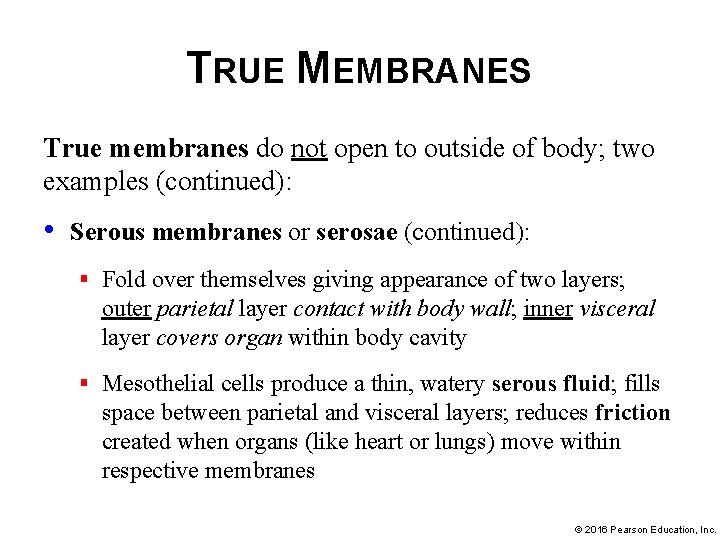
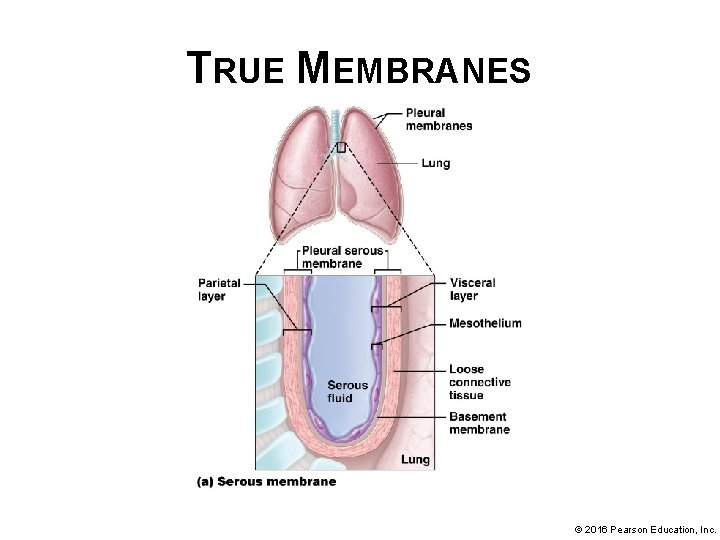
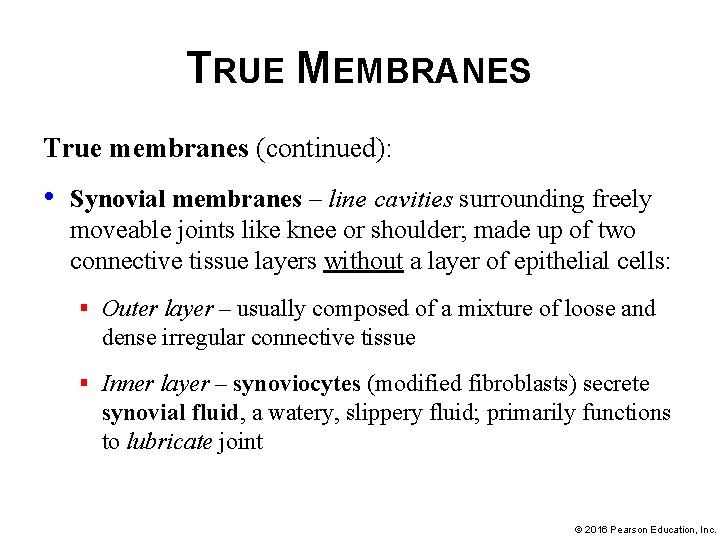
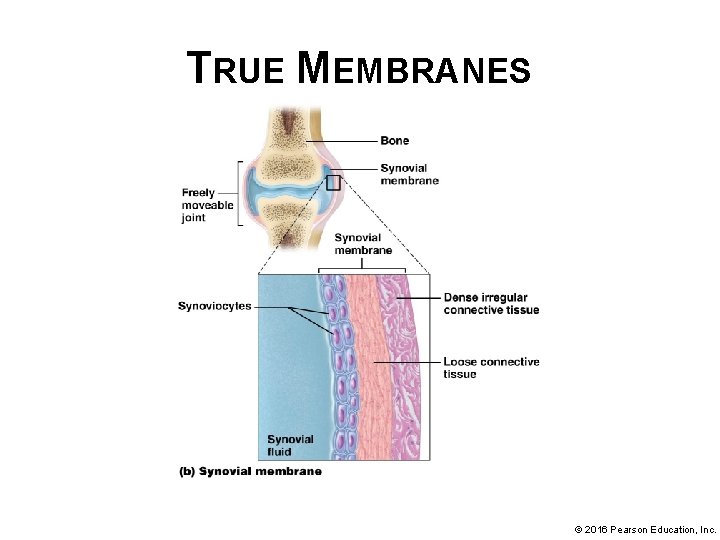
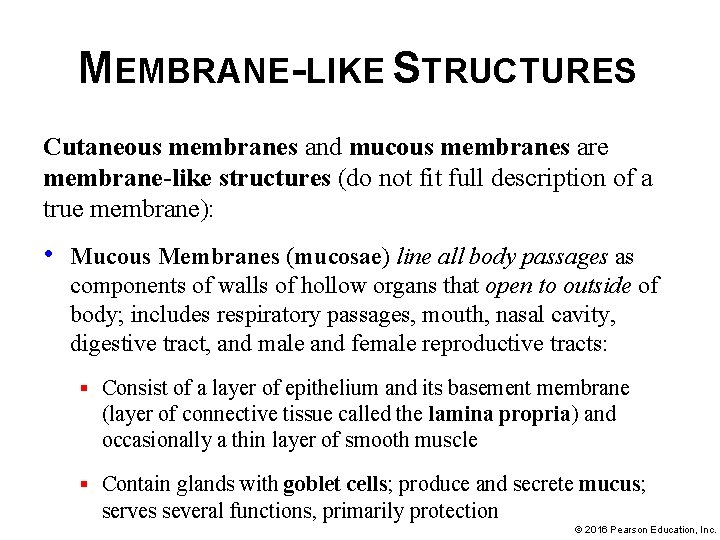
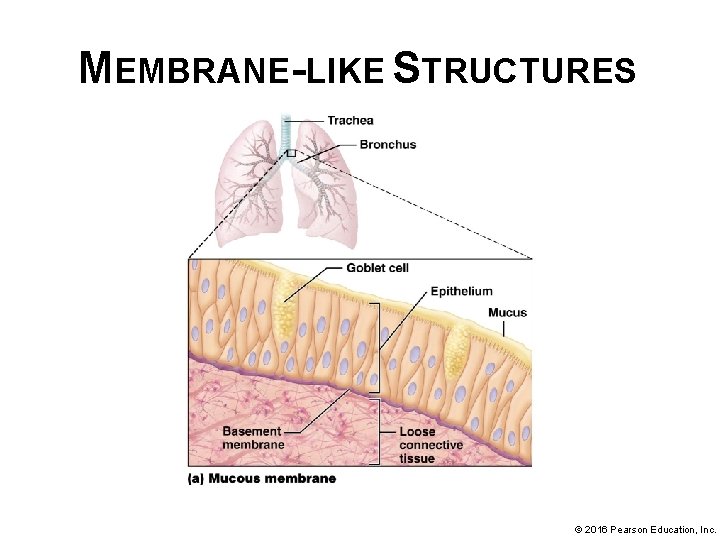
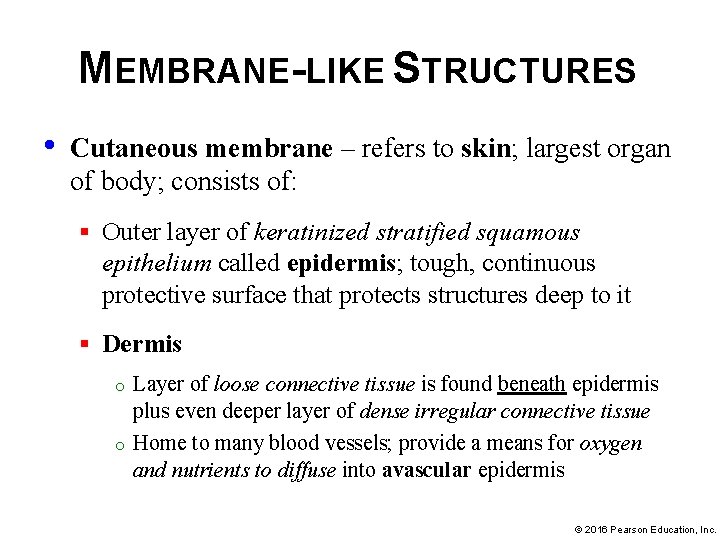

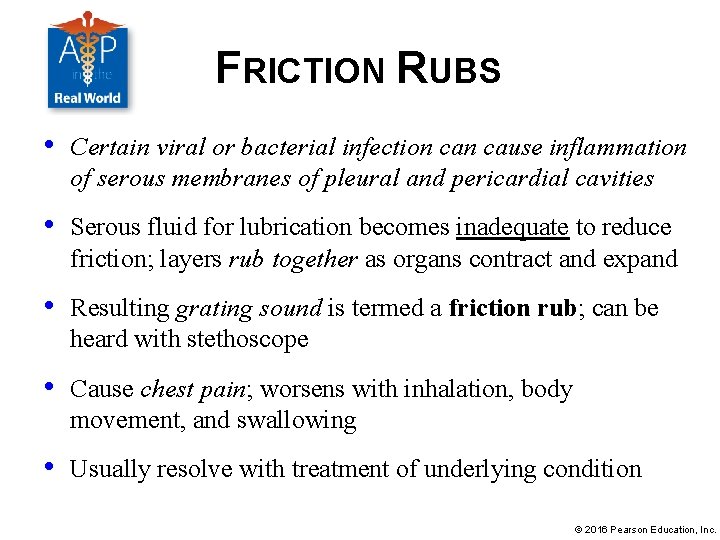
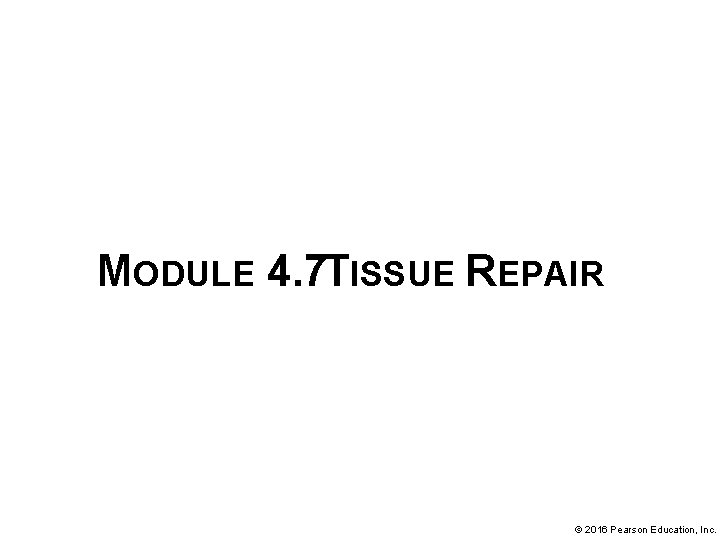
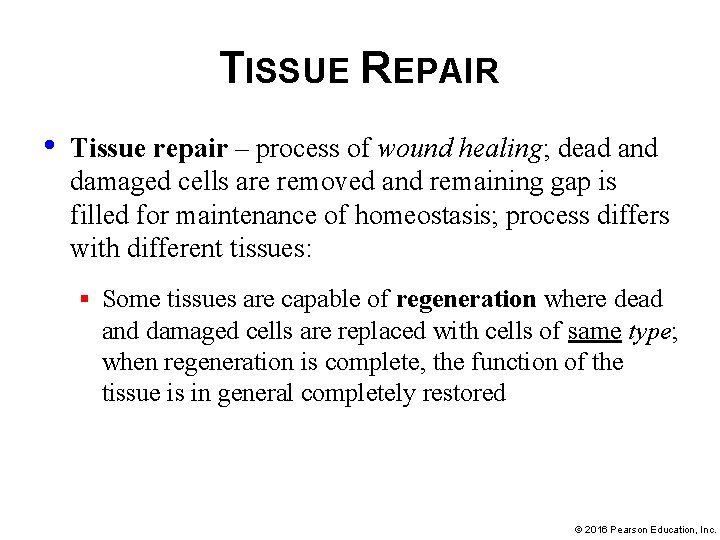
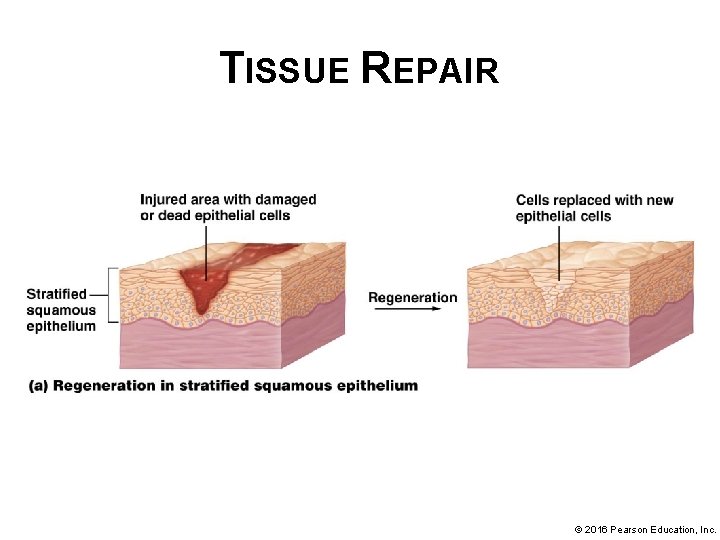
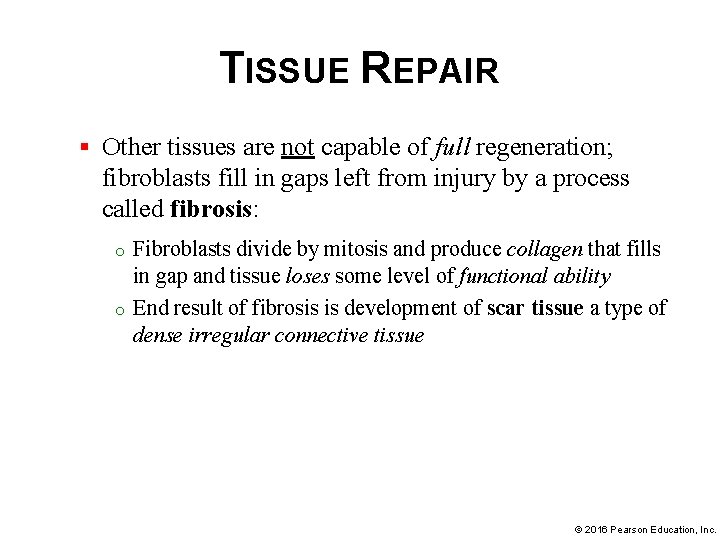
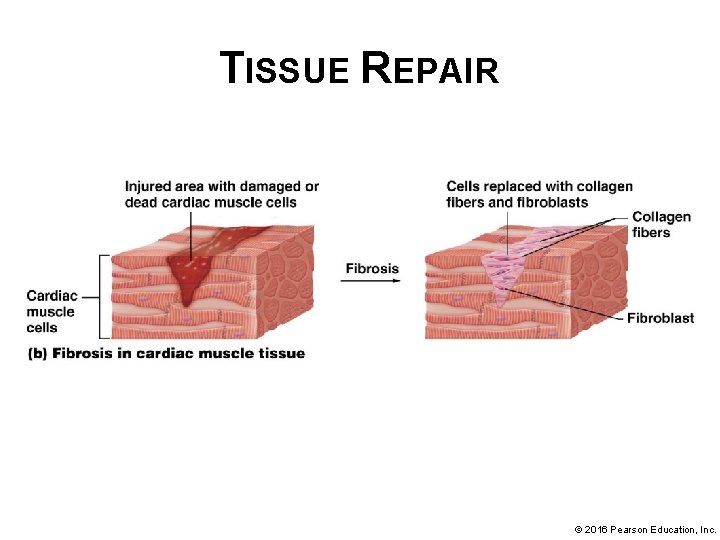
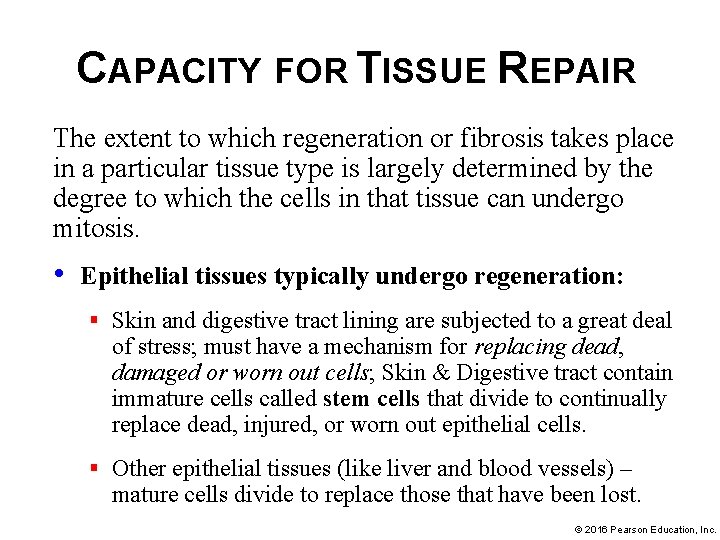
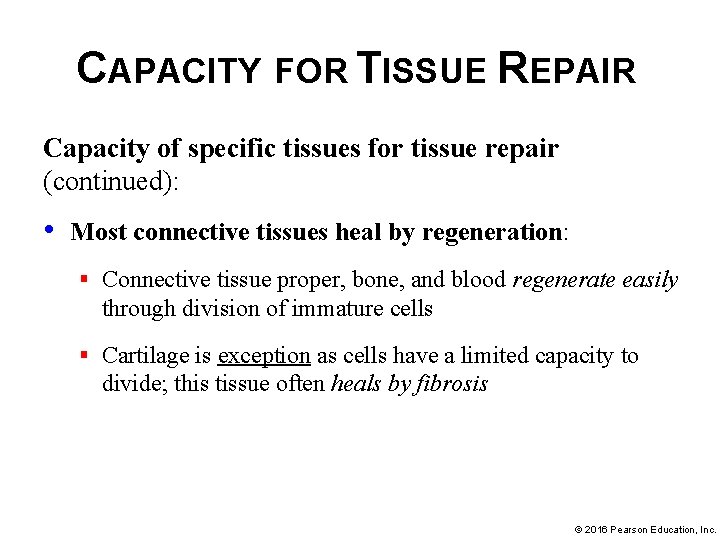
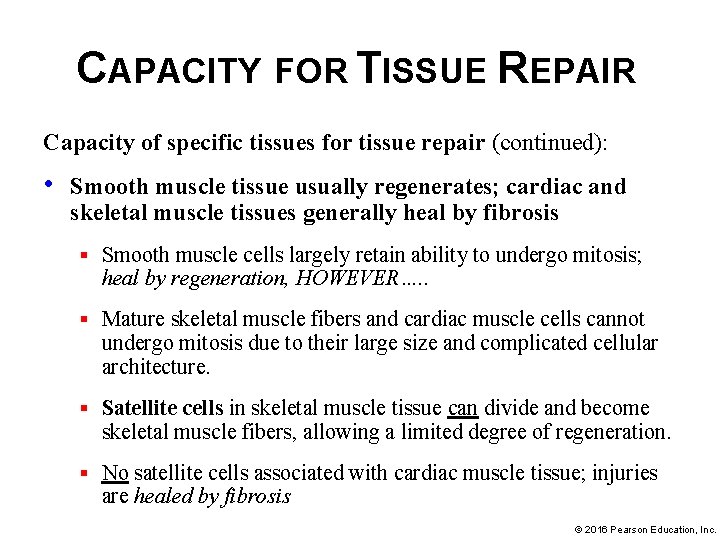
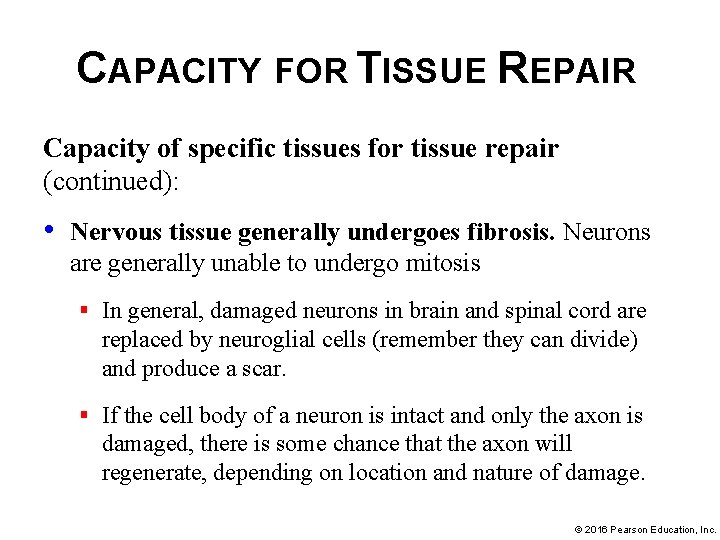

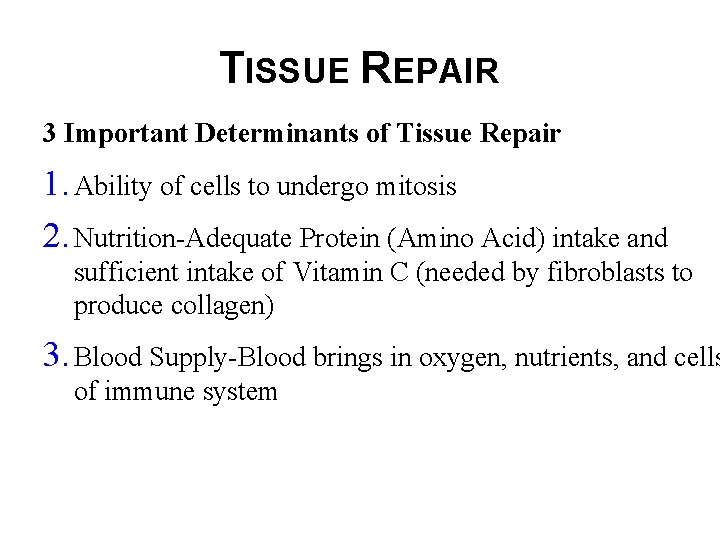
- Slides: 143

HUMAN ANATOMY &PHYSIOLOGY Second Edition Chapter 04 Histology Power. Point® Lectures created by Suzanne Pundt, University of Texas at Tyler Copyright © 2019, 2016 Pearson Education, Inc. All Rights Reserved

MODULE 4. 1 INTRODUCTION TO TISSUES © 2016 Pearson Education, Inc.

HISTOLOGY Histology – study of normal structures of tissues (a group of structurally and functionally related cells and their external environment that together perform common functions); all tissues share two basic components: • Consist of discrete population of cells that are related in structure and function • Have a surrounding material called extracellular matrix (ECM) © 2016 Pearson Education, Inc.

TYPES OF TISSUES Four primary tissue types are distinguished by kinds and number of cells, amount and composition of ECM, and their specific functions: • Epithelial tissues (epithelia) – tightly packed sheets of cells with no visible ECM; cover and line all body surfaces and cavities; specialized epithelia form glands that manufacture secretions such as sweat, saliva, or chemical messengers called hormones • Connective tissues – connect all other tissues in body to one another; ECM is a prominent feature for most connective tissue types with cells scattered throughout; bind, support, protect, and allow for transportation of substances © 2016 Pearson Education, Inc.

TYPES OF TISSUES Types of Tissues (continued): • Muscle tissues, capable of generating force and contracting; little ECM between cells • Nervous tissues consist of cells capable of generating, sending, receiving messages, and cells that support this activity, has unique ECM © 2016 Pearson Education, Inc.

THE EXTRACELLULAR MATRIX Extracellular matrix (ECM) – composed of the substances surrounding the cells in a tissue; consists of two main components, ground substance and protein fibers: The proportion of these components varies, the ECM in different tissues can be a fluid, thick gel, or a solid. ECM is made by the cells of the tissue. • ECM performs a variety of functions: § Provides tissue with strength to resist tensile (stretching) and compressive forces § Directs cells to their proper places within a tissue and holds cells in their proper positions § Regulates development, mitotic activity, and survival of cells © 2016 Pearson Education, Inc.

THE EXTRACELLULAR MATRIX • The shapeless, gel-like ground substance makes up most of ECM and contains extracellular fluid (ECF or interstitial fluid); components include water, nutrients, ions, and three families of macromolecules: glycosaminoglycans (GAGs), proteoglycans, and glycoproteins. § Glycosaminoglycans (GAGs) – long, straight polysaccharide chains. Examples include chondroitin sulfate and hyaluronic acid. o o o Negative charges of certain sugars in a GAG attract positively charged ions in ECF Ions create concentration gradient within ECF; draws water out of cells and blood vessels by osmosis Effectively “traps” water in ECM; helps ECM to resist compression; © 2016 Pearson Education, Inc.

THE EXTRACELLULAR MATRIX • Ground substance (continued): § Proteoglycans consist of GAGs bound to a protein core (structure resembles bottle brush) o o o Thousands of proteoglycans can bind to a very long GAG such as hyaluronic acid, forming huge proteoglycan “aggregates” Helps make ECM firmer, more solid, and resistant to compression Aggregates also act as barrier to diffusion of substances through ECM; protects underlying tissue from invading microorganisms © 2016 Pearson Education, Inc.

THE EXTRACELLULAR MATRIX • Ground substance (continued): § Glycoproteins- different types known collectively as cell-adhesion molecules (CAMs) o o Adhere cell to cell and into their places within ECM CAMS bind to cell surface proteins as well as protein fibers and proteoglycans; help maintain normal tissue architecture © 2016 Pearson Education, Inc.

THE EXTRACELLULAR MATRIX © 2016 Pearson Education, Inc.

THE EXTRACELLULAR MATRIX • Protein fibers – embedded within ground substance; long molecules composed of multiple fibrous subunits with a ropelike structure; great deal of tensile strength; three protein fiber types are found within ECM: Collagen, elastic, and reticular § Collagen fibers, collagen proteins make up 20– 25% of all protein in body; collagen fibers composed of multiple subunits of a fibrous protein; resistant to tension (pulling and stretching forces) and pressure © 2016 Pearson Education, Inc.

THE EXTRACELLULAR MATRIX • Protein fibers (continued): § Elastic fibers – may be stretched to 1 and ½ times their resting length without breaking (property called extensibility). When stretching force is removed they return to their original length (property called elasticity). Elastic fibers are composed of a protein called elastin that is surrounded by glycoproteins. § Reticular fibers – thin, type of collagen fiber; form a meshwork or scaffold that supports cells and ground substance of many tissues; form a weblike structure in organs like spleen that help trap foreign cells © 2016 Pearson Education, Inc.

THE EXTRACELLULAR MATRIX © 2016 Pearson Education, Inc.

DISEASES OF COLLAGEN AND ELASTIC FIBERS • Protein fibers of ECM are vital to structural integrity of many tissues and organs, as illustrated by: § Marfan syndrome – abnormal elastic fibers; tall stature with long limbs and fingers; multiple skeletal abnormalities, recurrent joint dislocations, heart valve and lens (eye) abnormalities and dilation of aorta; aortic dissection (rupture) is most lethal complication © 2016 Pearson Education, Inc.

CELL JUNCTIONS Cells may be linked in two ways: cell-adhesion molecules or by cell junctions Cell junctions : • • • Tight junctions Desmosomes Gap junctions © 2016 Pearson Education, Inc.

CELL JUNCTIONS • Tight junctions, also known as occluding junctions, hold cells tightly together such that space between is impermeable to movement of macromolecules § Integral proteins of adjacent cells’ plasma membranes are locked together forming a seal around apical perimeter of cell § Seal may not be complete allowing for leakage in some tissues § Example – found between cells in blood vessels; prevent blood from exiting vessels § LIKE A ZIPPER ON A FREEZER BAG © 2016 Pearson Education, Inc.

CELL JUNCTIONS • Desmosomes – composed of linking integral proteins; materials in extracellular fluid may pass through space between cells § Increase strength of a tissue by holding cells together so mechanical stress is more evenly distributed § Integral “linker” proteins are attached to intermediate filaments of cytoskeleton for structural reinforcement § Found in tissues subjected to a great deal of mechanical stress such as epithelia of skin § LIKE A BUTTON or SNAP © 2016 Pearson Education, Inc.

CELL JUNCTIONS • Gap junctions are small pores formed by protein channels between adjacent cells that allow small substances to flow freely between each cell’s cytoplasm § Found in between cells that communicate with electrical signals such as cardiac muscle cells § Gap junctions illustrate the Cell-Cell Communication Core Principle © 2016 Pearson Education, Inc.

CELL JUNCTIONS Figure 4. 2 Cell junctions. © 2016 Pearson Education, Inc.

MODULE 4. 2 EPITHELIAL TISSUES © 2016 Pearson Education, Inc.

EPITHELIAL TISSUES Epithelial tissues – found on every internal and external body surface; barriers between body and external environment; line organs and fluid-filled cavities; serve following additional functions: • Protection – shield underlying tissues from mechanical and thermal injury • Immune defenses – form physical barriers; prevent invasion by microorganisms; house cells of immune system enhancing protective function © 2016 Pearson Education, Inc.

EPITHELIAL TISSUES Epithelial tissues – additional functions (continued) • Secretion – form glands that produce substances like hormones and oils; secreted into blood or through ducts respectively • Transport into other tissues – selectively permeable barriers; certain substances are able to cross these barriers by passive or active transport and enter other tissues • Sensation – most associated with a rich nerve supply; detects changes in internal and external environments; taste buds are examples of specialized sensory epithelial cells © 2016 Pearson Education, Inc.

CONCEPT BOOST: BUT IT ALL LOOKS PINK! • Key to identifying tissues is to reduce every tissue to simplest components: cells and extracellular regions containing different types of chemicals • Shown here is a section of esophagus (tubular organ; transports food from mouth to stomach) § Each structure that contains a dark purple nucleus is a cell © 2016 Pearson Education, Inc.

CONCEPT BOOST: BUT IT ALL LOOKS PINK! • Shown here is a section of esophagus (continued): § Ground substance generally either looks clear or has just a slight tinge of color; protein fibers generally look like wavy or straight lines § Occasionally, collagen fibers form bundles that might resemble certain cell types; easiest way to differentiate them is to look for nuclei; if bundles lack nuclei, then they are likely to be collagen fibers © 2016 Pearson Education, Inc.

CONCEPT BOOST: BUT IT ALL LOOKS PINK! • Next section is sublingual gland (salivary gland that produces saliva) under tongue • Contains clusters of small, light red, round discs that lack nuclei • You may not immediately recognize these discs as cells because they lack nuclei, but they are in fact cells called red blood cells or erythrocytes; located in blood vessels; will be visible in many different tissue sections © 2016 Pearson Education, Inc.

COMPONENTS AND CLASSIFICATION OF EPITHELIA • Epithelial tissues consist mostly of tightly packed cells generally joined together by tight junctions and desmosomes • Structural arrangement make sheets of cells fairly impermeable and resistant to physical stresses and mechanical injury © 2016 Pearson Education, Inc.

COMPONENTS AND CLASSIFICATION OF EPITHELIA • Epithelial tissues are avascular (lack blood vessels and must obtain oxygen and nutrients by diffusion from deeper tissues); limits their thickness • ECM is found beneath cells in a thin basement membrane; has two components: § Basal lamina – ECM synthesized by epithelial cells; consists of mostly collagen fibers and ground substance § Reticular lamina – synthesized by underlying connective tissue; consists of reticular fibers and ground substance § Together these two layers “glue” epithelial tissue to underlying connective tissue; anchor underlying blood vessels in place; provide a barrier between epithelia and underlying tissues © 2016 Pearson Education, Inc.

COMPONENTS AND CLASSIFICATION OF EPITHELIA • Epithelial tissue – classified based on two criteria: number of cell layers and shape of cells in those layers; both have functional significance § Simple epithelia consist of a single cell layer § Stratified epithelia consist of more than one cell layer © 2016 Pearson Education, Inc.

COMPONENTS AND CLASSIFICATION OF EPITHELIA • Epithelial tissue – classification (continued): § Squamous cells are flattened § Cuboidal cells are short § Columnar cells are tall and elongated © 2016 Pearson Education, Inc.

COMPONENTS AND CLASSIFICATION OF EPITHELIA © 2016 Pearson Education, Inc.

COVERING AND LINING EPITHELIA Covering and lining epithelia – found on inner and outer body surfaces; each cell shape can be found in varying thicknesses in broad, flat sheets; often called membranes a term that can include the underlying basement membrane as well): • Simple epithelia – one cell-layer thick, their thinness makes them perfect for transportation of substances © 2016 Pearson Education, Inc.

COVERING AND LINING EPITHELIA § Four types of simple epithelia: o Simple squamous epithelium – very thin single layer of cells with a “fried egg” appearance; allows rapid diffusion of substances like oxygen, carbon dioxide, fluids, and ions; found in air sacs of lung, specific segments of kidney tubules, and lining blood vessels © 2016 Pearson Education, Inc.

COVERING AND LINING EPITHELIA § Four types of simple epithelia (continued): o Simple cuboidal epithelium – single layer of cube-shaped cells with large central nucleus; thin enough for rapid substance diffusion; found in segments of renal tubules, respiratory passages, ducts of many glands, and thyroid gland © 2016 Pearson Education, Inc.

COVERING AND LINING EPITHELIA § Four types of simple epithelia (continued): o Simple columnar epithelium – single layer of rectangular-shaped cells with nuclei located generally in basal portion of cell; often has microvilli on apical plasma membrane (drastically increases surface area for absorption of substances) or cilia (propel substances through hollow organs); cells with microvilli are found in small intestine and ciliated cells are found in uterine tubes and segments of respiratory tract © 2016 Pearson Education, Inc.

COVERING AND LINING EPITHELIA § Four types of simple epithelia (continued): o Pseudostratified columnar epithelium appears to be layered because nuclei are found at various heights, but only one celllayer thick with basal part of cell firmly in contact with basement membrane; found in segments of respiratory tract and nasal cavity; ciliated © 2016 Pearson Education, Inc.

COVERING AND LINING EPITHELIA • Transport across simple epithelia occurs via one of two routes: § Paracellular transportation – where substances leak between cells in an epithelial membrane; limited due to tight junctions that make spaces between cells nearly impermeable § Transcellular transportation – where a substance enters a cell by crossing plasma membrane, diffusing across cytosol, and exiting cell at opposite side © 2016 Pearson Education, Inc.

COVERING AND LINING EPITHELIA © 2016 Pearson Education, Inc.

COVERING AND LINING EPITHELIA • Stratified epithelium – more than one layer of cells; best suited as protective barriers in locations subjected to high degrees of mechanical stress; types include: § Keratinized stratified squamous epithelium – apical cellular layers are dead; lack nuclei; filled with protein keratin; makes tissue tough and resistant to friction; well adapted for outer layers of skin © 2016 Pearson Education, Inc.

COVERING AND LINING EPITHELIA • Stratified epithelium (continued): § Nonkeratinized stratified squamous epithelium – apical cellular layers retain nuclei; still alive; found in regions subjected to mechanical stress where surface must remain moist; mouth, throat, esophagus, and vagina © 2016 Pearson Education, Inc.

COVERING AND LINING EPITHELIA § Stratified cuboidal epithelium, rare in humans, consists of two cell layers and lines ducts of sweat glands © 2016 Pearson Education, Inc.

COVERING AND LINING EPITHELIA § Stratified columnar epithelium – also rare in humans; consists of only a few layers; apical cell layer is columnar and basal cell layer is cuboidal; found in male urethra, cornea of eye, and in ducts of certain glands like salivary glands © 2016 Pearson Education, Inc.

COVERING AND LINING EPITHELIA § Transitional epithelium – only found in urinary system; lines interior of kidney, ureters, urinary bladder, and urethra; basal cell layers are cuboidal while apical cell layers are domeshaped when tissue is relaxed; ability of apical cells to flatten contributes to ability of urinary tissues to stretch © 2016 Pearson Education, Inc.

COVERING AND LINING EPITHELIA © 2016 Pearson Education, Inc.

COVERING AND LINING EPITHELIA © 2016 Pearson Education, Inc.

GLANDULAR EPITHELIA • Gland – structure of epithelial origin that synthesizes and secretes a product by secretory cells § Arise from epithelial tissue that migrated into deeper connective tissue instead of remaining at surface § Can be classified by their shape and by how they release products § Products are released by two mechanisms: o o Endocrine Exocrine © 2016 Pearson Education, Inc.

GLANDULAR EPITHELIA § Endocrine glands- LACK DUCTS, secrete their products, usually hormones, directly into the bloodstream : o o Allows products to have widespread systemic effects on distant cells in different areas of body Example of Cell-Cell Communication Core Principle © 2016 Pearson Education, Inc.

GLANDULAR EPITHELIA § Exocrine glands release products to the apical surface of epithelium, generally to the exterior of the body or into a hollow organ that opens to the outside of the body: § The product of an exocrine gland is secreted through a duct lined with epithelial cells, products of exocrine gland have LOCAL actions only, affecting cells only in their general vicinity. © 2016 Pearson Education, Inc.

GLANDULAR EPITHELIA Goblet cells – most common unicellular gland; found abundantly in epithelial lining the digestive and respiratory tracts; -Secrete mucus-thick, sticky liquid that protects underlying epithelium © 2016 Pearson Education, Inc.

GLANDULAR EPITHELIA • Most exocrine glands are multicellular glands made up of clusters of secretory cells arranged in different ways • Multicellular glands are classified according to structure of their ducts and shape of secretory cell clusters § Simple glands—ducts don’t branch § Compound glands—branched ducts § Clusters of secretory cells may be arranged in three shapes: tubular (long and straight or coiled), acinar (spherical), or tubuloacinar (with both tubular and acinar sections) © 2016 Pearson Education, Inc.

GLANDULAR EPITHELIA © 2016 Pearson Education, Inc.

GLANDULAR EPITHELIA • Exocrine glands have two types of secretion: merocrine and holocrine § Merocrine secretion, used by majority of exocrine glands in body including salivary and sweat glands; package products into secretory vesicles for release by exocytosis © 2016 Pearson Education, Inc.

GLANDULAR EPITHELIA • Exocrine gland methods for secreting products (continued): § Holocrine secretion – used by sebaceous gland in skin to secrete sebum; secretory cells accumulate product in cytosol; only release product when cell ruptures and dies © 2016 Pearson Education, Inc.

CARCINOGENS AND EPITHELIAL TISSUES • Epithelia cover all body surfaces; therefore more subject to injury than most other tissues • Carcinogens – agents that induce DNA changes; can lead to cancer • Carcinoma – cancers of epithelial tissues; common examples include: § Lung Adenocarcinoma § Ductal and Papillary Carcinoma – cancers of breast © 2016 Pearson Education, Inc.

CARCINOGENS AND EPITHELIAL TISSUES • Basal cell carcinoma-a cancer of the skin • Basement membrane provides barrier that helps prevent/slow spread of carcinomas; cancers that have not penetrated the basement membrane/have not invaded other tissues are termed “pre-malignant” or carcinoma in situ; cancer cells often produce enzymes that degrade components of the basement membrane, facilitating spread © 2016 Pearson Education, Inc.

MODULE 4. 3 CONNECTIVE TISSUES © 2016 Pearson Education, Inc.

CONNECTIVE TISSUE Connective tissues are divided into two basic groups that differ in their cell types and ECM components: • Connective tissue proper (loose connective tissue, dense connective tissue, reticular tissue, and adipose tissue) • Specialized connective tissue (bone, cartilage, and blood) © 2016 Pearson Education, Inc.

CONNECTIVE TISSUE Connective tissues are a diverse group of tissues with a variety of functions: • Connecting and binding – connect structures in the body, in organs bind other tissues layers together • Support – bone and cartilage support weight of the body • Protection – bone tissue protects certain internal organs and cartilage and fat provide shock absorption; components of immune system are found within connective tissues • Transport- Blood is a fluid connective tissue that is the main transport medium in the body. © 2016 Pearson Education, Inc.

CONNECTIVE TISSUE Connective tissue consists of cells and ECM, like all tissues § Arrangement consists of loosely packed cells surrounded by protein fibers, all of which are embedded in ground substance. § Although diverse in function, connective tissues do share a common feature-their ECM plays an extensive role in their functions. © 2016 Pearson Education, Inc.

CONNECTIVE TISSUE PROPER Connective tissue proper • • Also known as general connective tissue Widely distributed in body Connect tissues and organs to one another Components of internal architecture of some organs © 2016 Pearson Education, Inc.

CONNECTIVE TISSUE PROPER • Cells of connective tissue proper – resident cells permanently inhabit tissue; migrant cells migrate into different areas of body depending on situation; cells in connective tissue proper include: § Fibroblasts § Adipocytes § Mast cells § Phagocytes § Other immune system cells © 2016 Pearson Education, Inc.

CONNECTIVE TISSUE PROPER • Cells of connective tissue proper (continued): § Fibroblasts – most common resident cell § Mature cells that have properties of an immature “blast” cell § Make protein fibers and ground substance (components of ECM); continually produce collagen proteins © 2016 Pearson Education, Inc.

CONNECTIVE TISSUE PROPER • Cells of connective tissue proper (continued): § Adipocytes (fat cells) – found in many different connective tissues; cytoplasm of each cell is filled with a single large lipid inclusion © 2016 Pearson Education, Inc.

CONNECTIVE TISSUE PROPER • Cells of connective tissue proper (continued): § Mast cells – largest resident cell o o Immune system cells filled with cytosolic inclusions (granules) of inflammatory mediators such as histamine Release mediators when stimulated, causing inflammation (protective response that activates immune system) © 2016 Pearson Education, Inc.

CONNECTIVE TISSUE PROPER • Cells of connective tissue proper (continued): § Phagocytes – also immune system cells; can ingest foreign substances, microorganisms, and dead or damaged cells by phagocytosis; include macrophages (either resident or migrant) and neutrophils (migrant cells) § Other immune system cells can migrate in and out of connective tissues depending on body’s needs © 2016 Pearson Education, Inc.

CONNECTIVE TISSUE PROPER • Four basic types of connective tissue proper: § Loose connective tissue § Dense connective tissue § Reticular tissue § Adipose tissue © 2016 Pearson Education, Inc.

CONNECTIVE TISSUE PROPER • Four basic types of connective tissue proper (continued): § Loose connective tissue (areolar tissue) – mostly ground substance, with all three types of protein fibers, fibroblasts, and other cells such as adipocytes, suspended in ground substance: o o Found beneath epithelium of skin, in membranes lining body cavities, and within walls of hollow organs Contains and supports blood vessels vital to avascular epithelial tissues; houses immune system cells that protect body from microorganisms © 2016 Pearson Education, Inc.

CONNECTIVE TISSUE PROPER © 2016 Pearson Education, Inc.

CONNECTIVE TISSUE PROPER • Four basic types of connective tissue proper (continued): § Dense connective tissue (fibrous connective tissue) – mostly protein fibers; grouped into three classes: o Dense irregular connective tissue – predominantly disorganized collagen bundles Strong and resists tension in all three planes of movement • Found in high tension areas like dermis (deep to skin) and surrounding organs and joints • © 2016 Pearson Education, Inc.

CONNECTIVE TISSUE PROPER © 2016 Pearson Education, Inc.

CONNECTIVE TISSUE PROPER • Four basic types of connective tissue proper (continued): § Dense connective tissue (continued): o Dense regular connective tissue Predominantly organized into parallel collagen bundles; resistant to tension in one plane • Found in tendons and ligaments that are subject to tension in one plane of movement • © 2016 Pearson Education, Inc.

CONNECTIVE TISSUE PROPER © 2016 Pearson Education, Inc.

CONNECTIVE TISSUE PROPER • Four basic types of connective tissue proper (continued): § Dense connective tissue (continued): o Dense regular elastic connective tissue (elastic tissue) Mostly parallel-oriented elastic fibers with randomly oriented collagen fibers • Found in walls of organs that stretch to perform their function, such as large blood vessels and certain ligaments • © 2016 Pearson Education, Inc.

CONNECTIVE TISSUE PROPER © 2016 Pearson Education, Inc.

CONNECTIVE TISSUE PROPER Note: arrangement of fibers in dense regular and irregular connective tissues is another example of the Structure-Function Core Principle © 2016 Pearson Education, Inc.

CONNECTIVE TISSUE PROPER • Four basic types of connective tissue proper (continued): § Reticular tissue – composed mostly of reticular fibers produced by fibroblasts (reticular cells); form fine networks that can support small structures like blood and lymphatic vessels o o Also found in lymph nodes and spleen; form weblike nets that trap old and foreign cells Forms part of basement membrane that supports all epithelia and internal structure of liver and bone marrow © 2016 Pearson Education, Inc.

CONNECTIVE TISSUE PROPER © 2016 Pearson Education, Inc.

CONNECTIVE TISSUE PROPER • Four basic types of connective tissue proper (continued): § Adipose tissue (fat tissue) – consists of fat-storing adipocytes and surrounding fibroblasts and ECM; adipocytes can increase in size to point where fibroblasts and ECM are scarcely visible; functions include: o o o Fat storage (major energy reserve of body) Insulation (retains warmth) Shock absorption and protection © 2016 Pearson Education, Inc.

CONNECTIVE TISSUE PROPER © 2016 Pearson Education, Inc.

CONNECTIVE TISSUE PROPER • Four basic types of connective tissue proper (continued): § Adipose tissue (continued): o o White adipose tissue – predominant fat tissue; appears white; consists of adipocytes with one large lipid inclusion in cytosol; found deep to skin as subcutaneous fat, and in abdomen, breasts, hips, buttocks, and thighs; white adipose surrounds heart and abdominal organs is known as visceral fat Brown adipose tissue – less common; has a brown appearance due to numerous mitochondria in cytoplasm and a vast blood supply; contain multiple lipid inclusions, cells of brown adipose tissue can oxidize fatty acids about 20 times as fast as white adipose tissue, additional energy used to generate heat. © 2016 Pearson Education, Inc.

ADIPOSE TISSUE AND OBESITY • Obesity – condition of having excess adipose tissue in proportion to lean body mass; two forms: § Hypertrophic – lipid inclusions accumulate excess fatty acids and increase in size up to 4 normal; number of adipocytes remains unchanged § Hypercellular – generally severe; number of adipocytes increases; correlates with development of obesity in infancy or early childhood; adult adipocytes lack ability to divide to form new cells • Both forms increase risk for certain health problems; development of related disorders is complex; depends on distribution of adipose tissue and genetic factors © 2016 Pearson Education, Inc.

SPECIALIZED CONNECTIVE TISSUES Specialized connective tissues have more specific functions and include the following three types of tissue: • Cartilage – found in joints between bones, in ear, nose, and segments of respiratory tract • Bone tissue (osseous tissue) – supports body; protects vital organs; provides attachments for muscles that allow for movement; stores calcium, and houses bone marrow (produces blood cells and stores fat) • Blood – unique connective tissue with a liquid ECM called plasma; consists of mostly water, dissolved solutes, and proteins © 2016 Pearson Education, Inc.

SPECIALIZED CONNECTIVE TISSUES Specialized connective tissues (continued): • Cartilage – tough, flexible tissue; absorbs shock and resists tension, compression, and shearing forces; ECM consists of collagen and elastic fibers, glycosaminoglycans, and proteoglycans § Populated with two cell types: o o Chondroblasts – immature cells that divide by mitosis and make most of ECM Surround themselves in ECM gradually mature and become relatively inactive chondrocytes, which eventually inhabit small cavities in ECM called lacunae. © 2016 Pearson Education, Inc.

SPECIALIZED CONNECTIVE TISSUES Specialized connective tissues (continued): • Cartilage (continued): § One of few connective tissues that is essentially avascular, few if any blood vessels course through cartilage itself, blood supply to tissue is mostly limited to outer sheath (perichondrium) § Oxygen and nutrients must diffuse from blood vessels in perichondrium through ECM to supply chondroblasts and chondrocytes; limits thickness of living cartilage © 2016 Pearson Education, Inc.

SPECIALIZED CONNECTIVE TISSUES Specialized connective tissues (continued): § Cartilage can be further divided into three classes based on ECM composition: o Hyaline cartilage – most abundant cartilage ECM mostly ground substance made of small bundles of fine collagen; give tissue a glassy appearance • Found on ends of bones in joints (articular cartilage), linking sternum to ribs, framing sections of respiratory tract, and in nose • Most of fetal skeleton begins as hyaline cartilage; replaced with bone during development • © 2016 Pearson Education, Inc.

SPECIALIZED CONNECTIVE TISSUES © 2016 Pearson Education, Inc.

SPECIALIZED CONNECTIVE TISSUES Specialized connective tissues (continued): § Cartilage can be further divided into three classes based on ECM composition (continued): o Fibrocartilage – filled with bundles of collagen fibers with little room for ground substance in ECM Fibroblasts reside in tissue in addition to chondroblasts and chondrocytes; fill ECM with collagen and some elastic fibers • Tissue has great tensile strength with some degree of elasticity • Found in fibrous joints; intervertebral discs and forms articular discs that improve fit of bones in joints • © 2016 Pearson Education, Inc.

SPECIALIZED CONNECTIVE TISSUES © 2016 Pearson Education, Inc.

SPECIALIZED CONNECTIVE TISSUES Specialized connective tissues (continued): § Cartilage can be further divided into three classes based on ECM composition (continued): o Elastic cartilage –ECM is filled with elastic fibers Allows this tissue to vibrate • Found in a limited number of structures; external ear and parts of larynx (“voice box”) • © 2016 Pearson Education, Inc.

SPECIALIZED CONNECTIVE TISSUES © 2016 Pearson Education, Inc.

SPECIALIZED CONNECTIVE TISSUES Specialized connective tissues (continued): • Bone § Bone ECM is composed of about 35% organic components consisting of collagen fibers and ground substance called osteoid; remaining 65% of ECM is inorganic portion composed of calcium phosphate crystals making bone of hardest substances in body § Bone is a dynamic tissue capable of remodeling; bone deposition and resorption is constantly occurring in healthy bone; tension increases osteoblast activity and bone deposition; pressure can increase osteoclast activity and bone resorption © 2016 Pearson Education, Inc.

SPECIALIZED CONNECTIVE TISSUES Specialized connective tissues (continued): • Bone (continued): § Osteoblasts o o “Bone-builders” found on outer surface of bones; closely associated with dense irregular collagenous connective tissue covering called periosteum Carry out process of bone deposition; synthesize and secrete organic portion of ECM and required chemicals for calcium to deposit within ECM. © 2016 Pearson Education, Inc.

SPECIALIZED CONNECTIVE TISSUES Specialized connective tissues (continued): • Bone (continued): § Osteocytes – osteoblasts that have surrounded themselves with ECM in lacunae; mature bone cells, relatively inactive but continue to make and secrete substances required for bone maintenance § Osteoclasts – large, multinucleated bone destroyers; carry out process of bone resorption; secrete hydrogen ions and enzymes that break down components of ECM © 2016 Pearson Education, Inc.

SPECIALIZED CONNECTIVE TISSUES © 2016 Pearson Education, Inc.

SPECIALIZED CONNECTIVE TISSUES Specialized connective tissues (continued): • Blood – unique in that ECM is fluid § ECM of blood is called plasma. § Plasma proteins – not fibers, smaller proteins with a variety of functions including transport of substances and blood clotting § Erythrocytes (red blood cells) bind to and transport oxygen through body § Leukocytes (white blood cells) function in immunity § Platelets – cell fragments; major role in blood clotting © 2016 Pearson Education, Inc.

SPECIALIZED CONNECTIVE TISSUES © 2016 Pearson Education, Inc.

OSTEOARTHRITIS AND GLUCOSAMINE SUPPLEMENTS • Osteoarthritis – caused by a variety of factors including: age, joint trauma, genetic disorders, and infection § Develops as hyaline cartilage lining joints degenerates § Leads to destruction of proteoglycan and collagen fibers; may continue until bone is exposed § Bones grind painfully together as motion occurs • Chondroblasts use glucosamine in synthesis of proteoglycans; further studies needed to determine if glucosamine supplementation can truly slow osteoarthritic degeneration of joints © 2016 Pearson Education, Inc.

CONNECTIVE TISSUES © 2016 Pearson Education, Inc.

CONNECTIVE TISSUES © 2016 Pearson Education, Inc.

MODULE 4. 4 MUSCLE TISSUES © 2016 Pearson Education, Inc.

MUSCLE TISSUES • • Muscle tissues are specialized for contraction • Walking, breathing, heart beating, and propulsion of substances through hollow organs all result from contractions of different muscle tissues • Main component of muscle tissue is muscle cell or myocyte; excitable (ability to respond to electrical or chemical stimulation) Three muscle tissue types share common ability to turn chemical energy of ATP into mechanical energy of movement © 2016 Pearson Education, Inc.

COMPONENTS OF MUSCLE TISSUE • Two forms of muscle cells based on arrangement of myofilaments (protein bundles) in cytoplasm: § Striated muscle cells – myofilaments are organized in such a way that there are regions where the myofilaments overlap and regions where they don’t. This produces both dark and light areas called “bands”, appear striped or striated under microscope (striations) § Smooth muscle cells – have myofilaments arranged in irregular bundles throughout cytoplasm, NO STRIATIONS visible § Endomysium – small amount of ECM that surrounds each muscle cell; helps to hold muscle cells together in tissue © 2016 Pearson Education, Inc.

TYPES OF MUSCLE TISSUE • There are three types of muscle tissue that feature different structural and functional characteristics: § Skeletal muscle § Cardiac muscle § Smooth muscle • Skeletal and cardiac muscle tissue are striated while smooth muscle tissue is not © 2016 Pearson Education, Inc.

TYPES OF MUSCLE TISSUE • Skeletal muscle tissue – found mostly attached to skeleton where its contraction produces body movement: § Skeletal muscle must be stimulated by the nervous system to contract; generally under voluntary or conscious control § Most skeletal muscle cells are long, extending nearly length of whole muscle; often called muscle fibers § Form by fusion of embryonic myoblasts resulting in cells with more than one nucleus (multinucleate); useful for nearly constant synthesis of enzymes, structural proteins, and contractile proteins © 2016 Pearson Education, Inc.

COMPONENTS OF MUSCLE TISSUE © 2016 Pearson Education, Inc.

TYPES OF MUSCLE TISSUE • Cardiac muscle tissue – found only in heart; composed of cardiac muscle cells; although these cells are striated like skeletal muscle cell, many differences can be seen: § Cardiac muscle tissue is involuntary; brain does not have conscious control over its contraction § Cells are short, branched, and usually have only one nucleus (uninucleate) § Intercalated disc – dark line separating individual cardiac muscle cells; not seen in skeletal muscle; contain gap junctions and modified tight junctions; allow heart muscle to contract as a unit © 2016 Pearson Education, Inc.

TYPES OF MUSCLE TISSUE © 2016 Pearson Education, Inc.

TYPES OF MUSCLE TISSUE • Smooth muscle tissue – consists of smooth muscle cells whose contractions are involuntary like cardiac muscle cells: § Found in walls of nearly every hollow organ, blood vessels, eyes, skin, and ducts of certain glands § Flattened cells with one centrally located ovoid nucleus § Most smooth muscle cells contain gap junctions in their plasma membranes that link them with other smooth muscle cells. © 2016 Pearson Education, Inc.

TYPES OF MUSCLE TISSUE © 2016 Pearson Education, Inc.

MODULE 4. 5 NERVOUS TISSUES © 2016 Pearson Education, Inc.

NERVOUS TISSUES • Nervous tissue makes up majority of brain, spinal cord, and nerves; composed of two main cell types and their surrounding ECM § Neurons – capable of sending and receiving messages § Neuroglial cells – perform various functions that support neurons • ECM is unique; made up of ground substance with unique proteoglycans not found in other tissues of body; contains few protein fibers © 2016 Pearson Education, Inc.

NEURONS • Neurons (like muscle cells) are excitable cells; most mature neurons are amitotic (do not undergo mitosis); Neurons contain three main components: § Cell body or soma – biosynthetic center of neuron where nucleus and most organelles are found § Solitary axon extends from one end of soma; responsible for moving a nerve impulse from soma to a target cell (may be another neuron, muscle cell, or gland); axons illustrate Cell-Cell Communication Core Principle § Dendrites – other extensions protruding from soma; typically short with multiple branches; receive impulses from axons of neighboring neurons; deliver impulses to soma © 2016 Pearson Education, Inc.

NEURONS © 2016 Pearson Education, Inc.

NEUROGLIAL CELLS • Neuroglial cells – much smaller cells surrounding neurons; supportive cells: § Functions: o o Anchoring neurons and blood vessels in place Monitoring composition of extracellular fluid Speeding up rate of nerve impulse transmission Circulating fluid surrounding brain and spinal cord § Able to divide by mitosis (unlike neurons) © 2016 Pearson Education, Inc.

CONCEPT BOOST: BUT IT ALL LOOKS PINK! PART 2 In Examples A, B, and C: 1. Identify the cells and ECM (review basics from Concept Boost Part 1 as needed) 2. Notice how the cells are shaped and arranged: § Are the cells packed tightly together, or are they widely spaced? § Do they form a continuous sheet, as in epithelial tissue—or do they seem to be surrounded by ECM, as in connective tissue? § Are the cells all identical, or are there clearly different types? § Do the cells have “arms” extending from a central body? © 2016 Pearson Education, Inc.

CONCEPT BOOST: BUT IT ALL LOOKS PINK! PART 2 3. Notice how the ECM is arranged: § Is the ECM confined to one specific part of the tissue, or is it spaced evenly between the cells? § Does ground substance predominate, or are protein fibers the main elements? § What types of protein fibers can you see? 4. Determine the class of tissue. Using your analysis in the preceding steps, now you are ready to identify the class of tissue (answers are in text) © 2016 Pearson Education, Inc.

CONCEPT BOOST: BUT IT ALL LOOKS PINK! PART 2 © 2016 Pearson Education, Inc.

MODULE 4. 6 PUTTING IT ALL TOGETHER: THE BIG PICTURE OF TISSUES IN ORGANS © 2016 Pearson Education, Inc.

THE BIG PICTURE OF TISSUES IN ORGANS Two or more tissues that combine structurally and functionally form an organ: • • Example, Skeletal muscle composed of 2 main tissues: skeletal muscle tissue and dense irregular collagenous connective tissue § Each has distinct functional role; skeletal muscle tissue allows it to contract; surrounding connective tissue binds muscle cells together and supports them so that their activity produces a contraction of whole organ © 2016 Pearson Education, Inc.

THE BIG PICTURE OF TISSUES IN ORGANS • More complex organ; consists of many different tissue types – trachea § Hollow organ; provides passageway through which air passes on its way into/out of lungs § (next slide) – illustration of tissues of trachea from superficial to deep with list of their main functions § Each tissue layer serves an important role in overall function of trachea: conducting air © 2016 Pearson Education, Inc.

THE BIG PICTURE OF TISSUES IN ORGANS © 2016 Pearson Education, Inc.

MODULE 4. 7 MEMBRANES © 2016 Pearson Education, Inc.

MEMBRANES Membranes – thin sheets of one or more tissues that line a body surface or cavity: • Most consist of a superficial epithelial layer resting on a connective tissue layer; sometimes contains smooth muscle • Functions: anchor organs in place, serve as barriers, function in immunity, and secrete various substances • True membranes – include serous and synovial membranes; fit above structural and functional definitions • Membrane-like structures – include mucous and cutaneous membranes; don’t fit above structural and functional definitions but perform many of same functions © 2016 Pearson Education, Inc.

TRUE MEMBRANES True membranes do not open to outside of body; two examples: • Serous membranes or serosae – line pericardial, peritoneal, and pleural body cavities; structural and functional features: § Consist of a mesothelium (layer of simple squamous epithelium) associated basement membrane, and a layer of loose connective tissue © 2016 Pearson Education, Inc.

TRUE MEMBRANES True membranes do not open to outside of body; two examples (continued): • Serous membranes or serosae (continued): § Fold over themselves giving appearance of two layers; outer parietal layer contact with body wall; inner visceral layer covers organ within body cavity § Mesothelial cells produce a thin, watery serous fluid; fills space between parietal and visceral layers; reduces friction created when organs (like heart or lungs) move within respective membranes © 2016 Pearson Education, Inc.

TRUE MEMBRANES © 2016 Pearson Education, Inc.

TRUE MEMBRANES True membranes (continued): • Synovial membranes – line cavities surrounding freely moveable joints like knee or shoulder; made up of two connective tissue layers without a layer of epithelial cells: § Outer layer – usually composed of a mixture of loose and dense irregular connective tissue § Inner layer – synoviocytes (modified fibroblasts) secrete synovial fluid, a watery, slippery fluid; primarily functions to lubricate joint © 2016 Pearson Education, Inc.

TRUE MEMBRANES © 2016 Pearson Education, Inc.

MEMBRANE-LIKE STRUCTURES Cutaneous membranes and mucous membranes are membrane-like structures (do not fit full description of a true membrane): • Mucous Membranes (mucosae) line all body passages as components of walls of hollow organs that open to outside of body; includes respiratory passages, mouth, nasal cavity, digestive tract, and male and female reproductive tracts: § Consist of a layer of epithelium and its basement membrane (layer of connective tissue called the lamina propria) and occasionally a thin layer of smooth muscle § Contain glands with goblet cells; produce and secrete mucus; serves several functions, primarily protection © 2016 Pearson Education, Inc.

MEMBRANE-LIKE STRUCTURES © 2016 Pearson Education, Inc.

MEMBRANE-LIKE STRUCTURES • Cutaneous membrane – refers to skin; largest organ of body; consists of: § Outer layer of keratinized stratified squamous epithelium called epidermis; tough, continuous protective surface that protects structures deep to it § Dermis o o Layer of loose connective tissue is found beneath epidermis plus even deeper layer of dense irregular connective tissue Home to many blood vessels; provide a means for oxygen and nutrients to diffuse into avascular epidermis © 2016 Pearson Education, Inc.

MEMBRANE-LIKE STRUCTURES © 2016 Pearson Education, Inc.

FRICTION RUBS • Certain viral or bacterial infection cause inflammation of serous membranes of pleural and pericardial cavities • Serous fluid for lubrication becomes inadequate to reduce friction; layers rub together as organs contract and expand • Resulting grating sound is termed a friction rub; can be heard with stethoscope • Cause chest pain; worsens with inhalation, body movement, and swallowing • Usually resolve with treatment of underlying condition © 2016 Pearson Education, Inc.

MODULE 4. 7 TISSUE REPAIR © 2016 Pearson Education, Inc.

TISSUE REPAIR • Tissue repair – process of wound healing; dead and damaged cells are removed and remaining gap is filled for maintenance of homeostasis; process differs with different tissues: § Some tissues are capable of regeneration where dead and damaged cells are replaced with cells of same type; when regeneration is complete, the function of the tissue is in general completely restored © 2016 Pearson Education, Inc.

TISSUE REPAIR © 2016 Pearson Education, Inc.

TISSUE REPAIR § Other tissues are not capable of full regeneration; fibroblasts fill in gaps left from injury by a process called fibrosis: o o Fibroblasts divide by mitosis and produce collagen that fills in gap and tissue loses some level of functional ability End result of fibrosis is development of scar tissue a type of dense irregular connective tissue © 2016 Pearson Education, Inc.

TISSUE REPAIR © 2016 Pearson Education, Inc.

CAPACITY FOR TISSUE REPAIR The extent to which regeneration or fibrosis takes place in a particular tissue type is largely determined by the degree to which the cells in that tissue can undergo mitosis. • Epithelial tissues typically undergo regeneration: § Skin and digestive tract lining are subjected to a great deal of stress; must have a mechanism for replacing dead, damaged or worn out cells; Skin & Digestive tract contain immature cells called stem cells that divide to continually replace dead, injured, or worn out epithelial cells. § Other epithelial tissues (like liver and blood vessels) – mature cells divide to replace those that have been lost. © 2016 Pearson Education, Inc.

CAPACITY FOR TISSUE REPAIR Capacity of specific tissues for tissue repair (continued): • Most connective tissues heal by regeneration: § Connective tissue proper, bone, and blood regenerate easily through division of immature cells § Cartilage is exception as cells have a limited capacity to divide; this tissue often heals by fibrosis © 2016 Pearson Education, Inc.

CAPACITY FOR TISSUE REPAIR Capacity of specific tissues for tissue repair (continued): • Smooth muscle tissue usually regenerates; cardiac and skeletal muscle tissues generally heal by fibrosis § Smooth muscle cells largely retain ability to undergo mitosis; heal by regeneration, HOWEVER…. . § Mature skeletal muscle fibers and cardiac muscle cells cannot undergo mitosis due to their large size and complicated cellular architecture. § Satellite cells in skeletal muscle tissue can divide and become skeletal muscle fibers, allowing a limited degree of regeneration. § No satellite cells associated with cardiac muscle tissue; injuries are healed by fibrosis © 2016 Pearson Education, Inc.

CAPACITY FOR TISSUE REPAIR Capacity of specific tissues for tissue repair (continued): • Nervous tissue generally undergoes fibrosis. Neurons are generally unable to undergo mitosis § In general, damaged neurons in brain and spinal cord are replaced by neuroglial cells (remember they can divide) and produce a scar. § If the cell body of a neuron is intact and only the axon is damaged, there is some chance that the axon will regenerate, depending on location and nature of damage. © 2016 Pearson Education, Inc.

OTHER FACTORS AFFECTING TISSUE REPAIR • Other factors affecting tissue repair (beside ability to undergo mitosis) include nutrition and blood supply. § Tissue repair involves production of proteins, such as collagen; requires an adequate supply of amino acids to proceed § Vitamin C is needed by fibroblasts to produce collagen § Blood supply to injured region must be adequate to deliver much-needed oxygen and nutrients and cells of immune system needed for tissue repair © 2016 Pearson Education, Inc.

TISSUE REPAIR 3 Important Determinants of Tissue Repair 1. Ability of cells to undergo mitosis 2. Nutrition-Adequate Protein (Amino Acid) intake and sufficient intake of Vitamin C (needed by fibroblasts to produce collagen) 3. Blood Supply-Blood brings in oxygen, nutrients, and cells of immune system